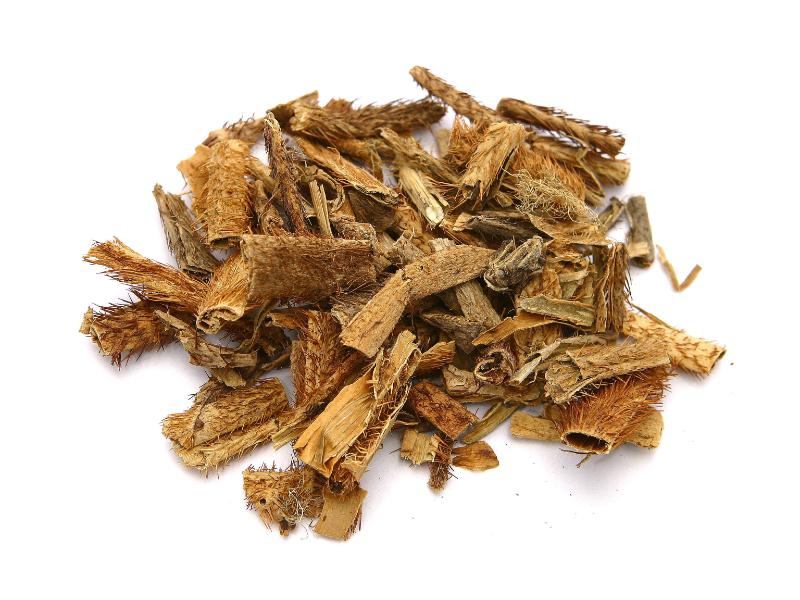Search in medicinals
Acanthopanacis Cortex
Acanthopanax [root bark]
五加皮 〔五加皮〕 wǔ jiā pí

Alternate Chinese names: 南五加皮 nán wǔ jiā pí
Kingdom: Plant
Origin in PRC Pharmacopoeia: Acanthopanax gracilistylus W.W. Smith. [= Eleutherococcus gracilistylus W.W. Smith] (PRC Pharmacopoeia)
Origin in unofficial sources: Acanthopanax gracilistylus W.W. Smith* [= Eleutherococcus gracilistylus W.W. Smith]; Acanthopanax sessiliflorus (Rupr. et Maxim.) Seem.; Acanthopanax senticosus (Rupr. et Maxim.) Harms; Acanthopanax henryi (Oliv.) Harms; Acanthopanax verticillatus Hoo; Acanthopanax giraldii Harms; Acanthopanax trifoliatus (L.) Merr.; Acanthopanax evodiaefolius Franch. var. ferrugineus W.W. Smith; Acanthopanax setchuenensis Harms; Acanthopanax leucorrhizus (Oliv.) Harms
Use: Medicinal
Category: Wind-damp–dispelling agents / Wind-damp–dispelling sinew-strengthening agents
Properties: Acrid, bitter; warm.
Channel entry: Liver and kidney channels.
Actions and indications:
- Dispels wind-damp: Wind-damp impediment pain; hypertonicity of the limbs.
- Strengthens sinew and bone: Liver-kidney yīn vacuity with limp lumbus and knees; slowness to walk in children.
- Disinhibits urine: Water swelling and inhibited urination.
Dosage and method: Oral: 5–15g in decoctions.
Product description: This bark comes in strips of varying lengths, coiled in tubular form. Its exterior surface is finely wrinkled but generally smooth in texture and pierced with long lenticels and is grayish brown in color; the interior surface is grayish white. This bark, which gives off a faint smell, is brittle, and leaves a jagged edge when snapped. The decocting pieces are slices 1 mm thick.
Quality: Neat long thick strips without any trace of wood.
Production area: Jiāngsū, ānhuī, Zhèjiāng, Húběi, Húnán, Guǎngxī, Sìchuān, Yúnnán, Shǎnxī (Shaanxi), Hénán, and Shāndōng.
Back to search result Previous Next